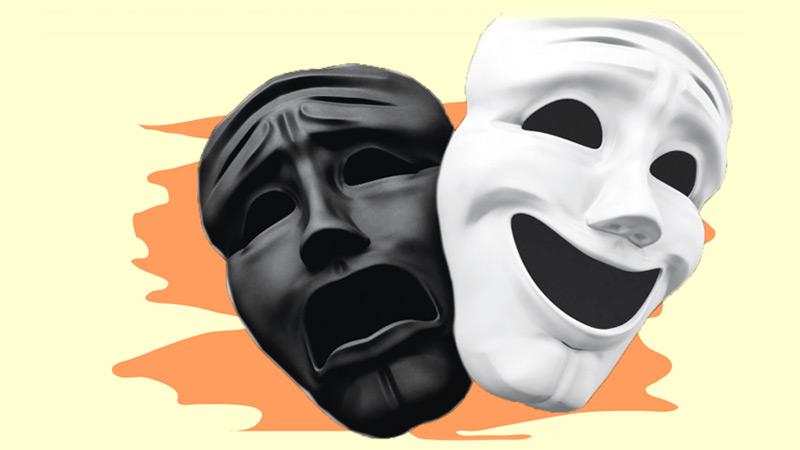
The beauty of a work of art is not a thing that is hidden from all its other aspects. An analysis of cinema seems to suggest that beauty (artistry) is something that can be subject to psychoanalysis or any other critique.
I write, but the purpose here is not to find out what beauty is. One of the purposes here is to weave a historical narrative about the disappearance of the distinction between a work of art and those who enjoy it. The other is to look at all art genres in general and how cinema is a cultural symptom of post-capitalism in particular. However, it is something that is tied to the problem of the beauty of a work of art.
Intimacy between art and spectator
 Walter Benjamin’s ‘The Work of Art in the Age of Mechanical Reproduction’ is in a sense a turning point in the discourse on the beauty of the work of art. In fact, for me, Benjamin’s essay deconstructs the existing oppositional structures of creation and its review. However, Benjamin’s essay is relevant to me in terms of two things.
Walter Benjamin’s ‘The Work of Art in the Age of Mechanical Reproduction’ is in a sense a turning point in the discourse on the beauty of the work of art. In fact, for me, Benjamin’s essay deconstructs the existing oppositional structures of creation and its review. However, Benjamin’s essay is relevant to me in terms of two things.
Benjamin discourse on the distance or intimacy between the visual arts and the spectator.
The dissolve of the distinction between art and the fan in the period of late- capitalism.
According to Benjamin, the stage actor demonstrates his performance by appearing there himself. In fact, both the actor and spectator share the same space. But film acting is what the camera presents. Since the acting of the film actor is such a camera presentation, it must not be considered a play with an integral whole. Under the direction of the cameraman, the camera records the moments of acting.
The editor assembles what he is provided with. That is the reality that the camera sees. Obviously, the actor’s performance is subject to a number of visual tests. That is the consequence of the actor’s acting being portrayed by the camera.
Unlike a stage actor, a film actor does not have the opportunity to adjust his acting according to the audience. He does not appear in front of the audience himself for acting. Benjamin’s important point here is that it allows the spectator to become a critic. Identifying the spectator to the actor is identifying with the camera. Outcome is that the audience takes its place on the camera. In this perspective, Benjamin creates a future for Christian Metz, a film critic who introduces psychoanalysis to film criticism. The halo of the stage actor (or his imaginative prowess) is emphasised by Benjamin, who is tied to his live presence. Accordingly, the visual impact of Macbeth on stage is indistinguishable from that of the audience and the actor.
Spectator and actor on stage
For Benjamin, the spatial opportunity for the audience to identify with the actor on stage (sharing the same space between the audience and the actor) is broken, but begins to re-emerge in the Metzian critique. Accordingly, the cinema screen becomes a mirror screen and the audience happens to identify with the actor or actress. Then the cinema becomes a signifier and the spectator becomes a subject. Metz likens this to an eighteen-month-old baby seeing his own image in the mirror and identifying with it. But the problem is that the spectator is not on the screen. Mets solves this problem by writing in his landmark book, ‘The Imaginary Signifier’ as follows.
“In the cinema, the object remains: fiction or no, there is always something on the screen. But the reflection of the own body has disappeared. The cinema spectator is not a child and the child really at the mirror stage (from around six to around eighteen months) would certainly be incapable of ‘following’ the simplest of films. Thus, what makes possible the spectator’s absence from the screen- or rather the intelligible unfolding of the film despite that absence- is the fact that the spectator has already known the experience of the mirror(of the true mirror),and is thus able to constitute a world of objects without having first to recognize himself within it.”
However, if the movie screen is a mirror, it is true that the spectator can see that he is not there. The spectator who is positioned there with the camera becomes a subject by identifying with a character. That’s the Metz’s reading of the cinema spectatorship. Now, in the analysis of mechanical reproduction, Walter Benjamin turns the film audience and the film screen into one, not two. Mets’ psychoanalytic critique rediscovers that it is one.
Originality of art
The other thing I emphasize here about Benjamin is that the difference between a work of art and those who enjoy it disappears in the post-capitalist era. Benjamin says that as a consequence of the production of mere mechanical products, there is a tendency for even pedestrians to become movie stars. I quote Benjamin here.
“ It began with the daily press opening to its reader’s space for ‘letters to the editor.’ And today there is hardly a gainfully employed European who could not, in principle, find an opportunity to publish somewhere or other comments on his work, grievances, documentary reports, or that sort of thing. Thus, the distinction between author and public is about to lose its basic character. The difference becomes merely functional; it may vary from case to case. At any moment the reader is ready to turn into a writer. As expert, which he had to become willy-nilly in an extremely specialised work process, even if only in some minor respect, the reader gains access to authorship. “
Benjamin explains in the above statement how the division between the author and reader is nullified. The listener who asked for his favourite song via a postcard back then is now speaking to the whole country on the radio. As a result, programers on television and radio channels have become comedians.
All this is a cultural symptom of the post-capitalist, economic man. Metz, enlightened by Lacanian psychoanalysis, transcends Benjamin and grasps it subtly. Also, in the post-capitalist era, the work of art and its connoisseurs are made to disappear by politics. In other words, there is no such thing as an artist and a connoisseur now. So it is a delusion to worry about the original of art.
